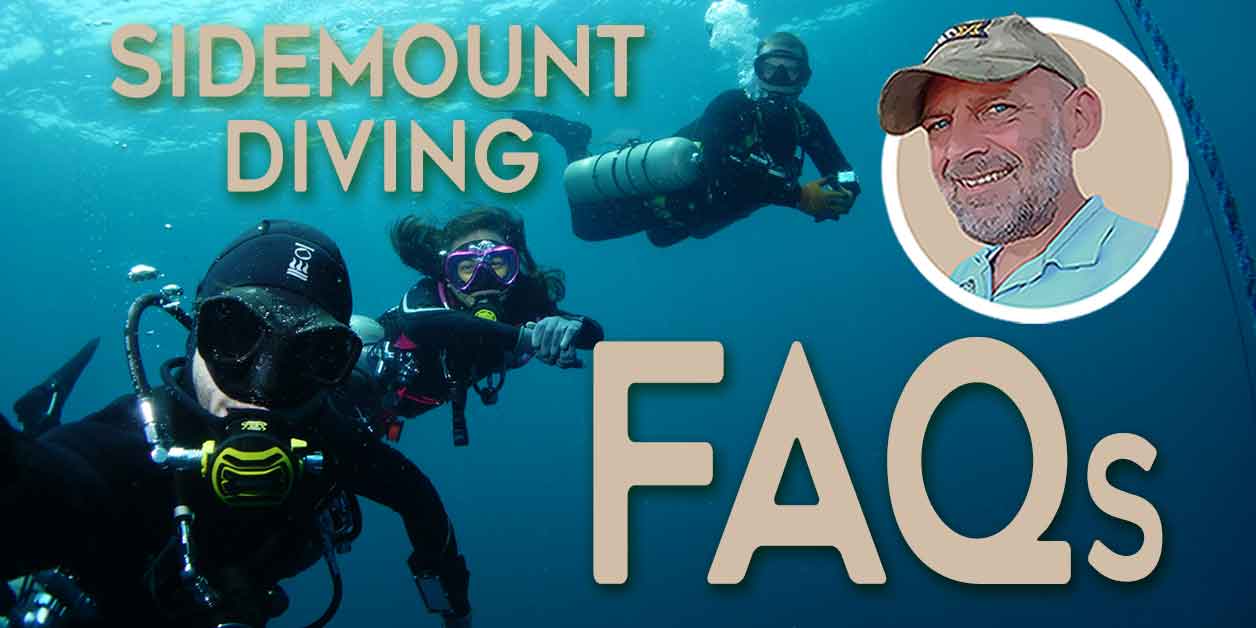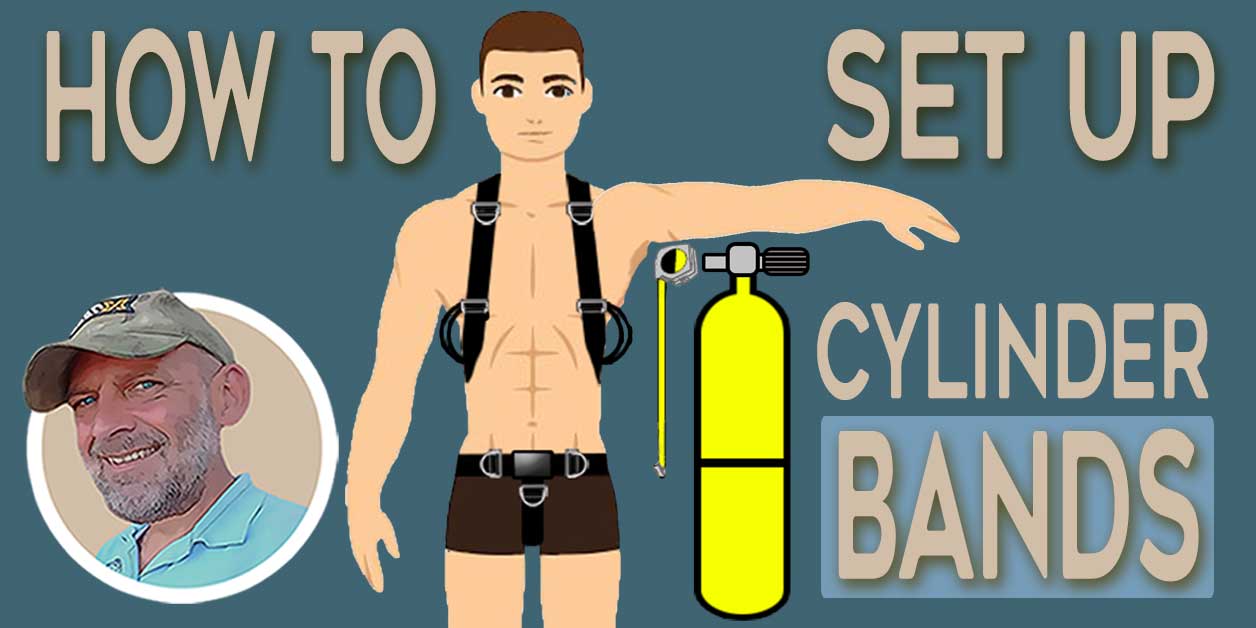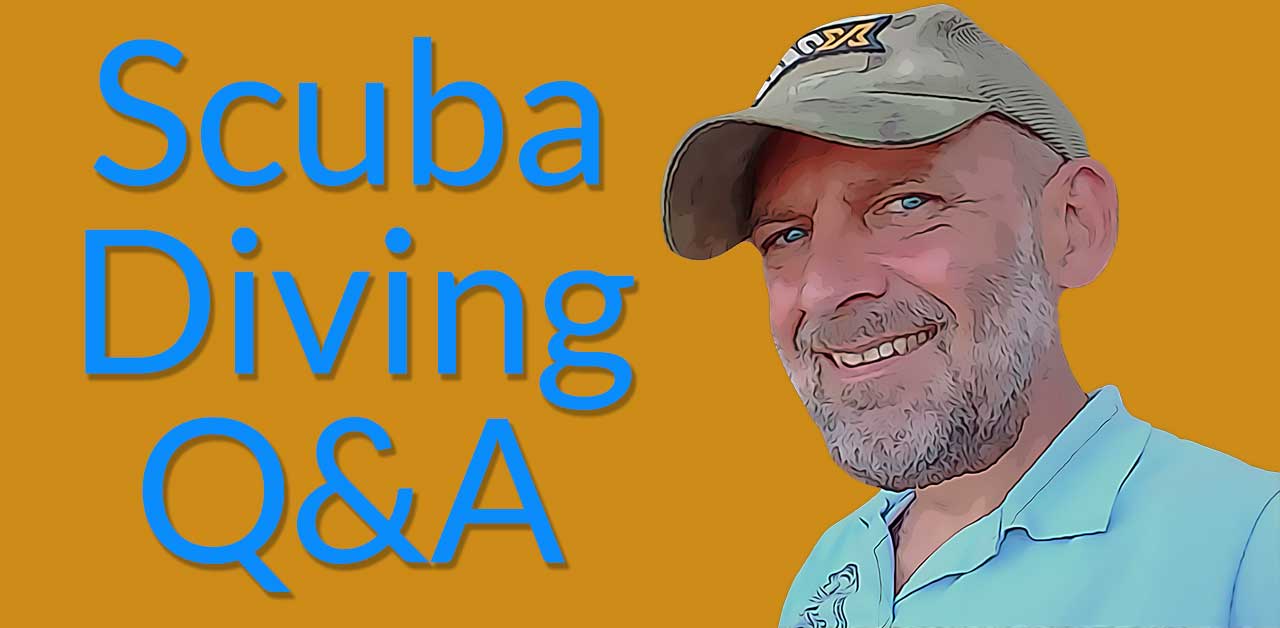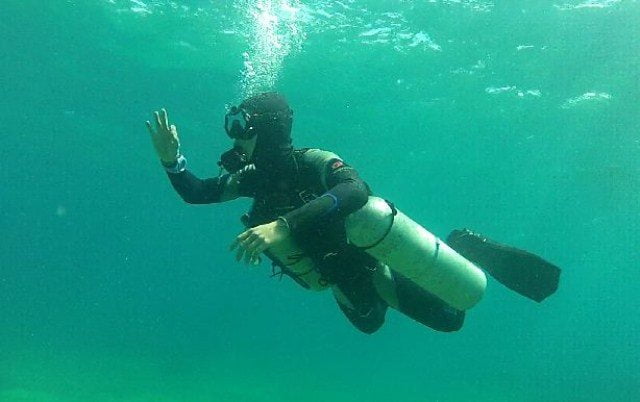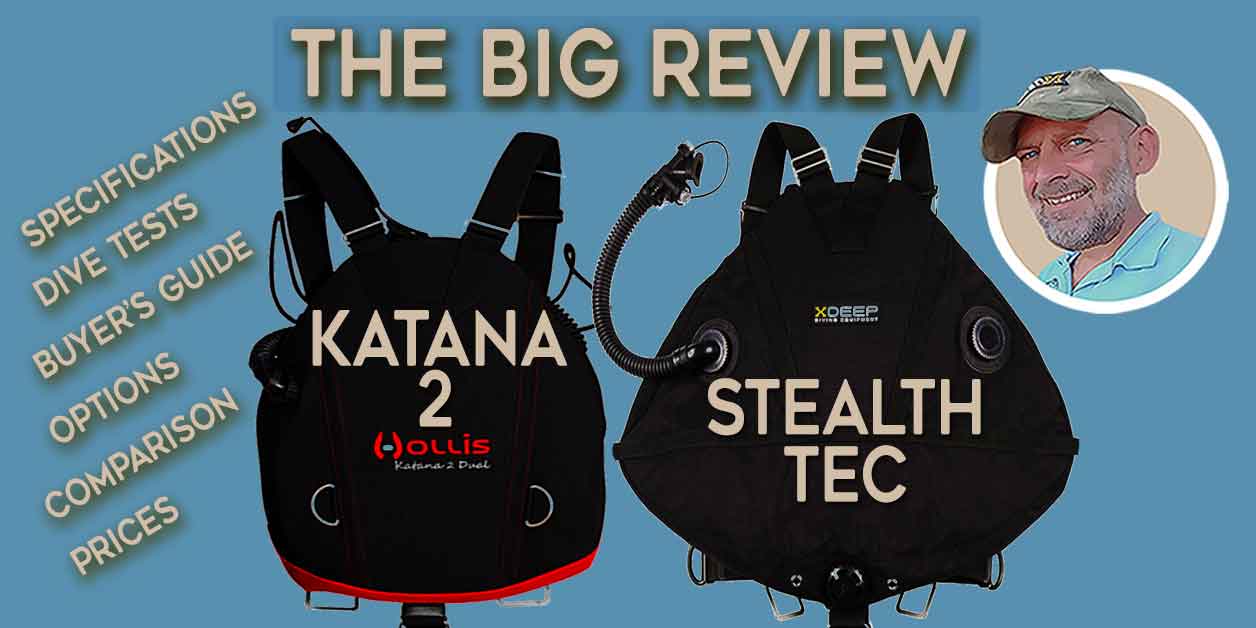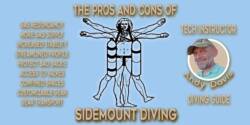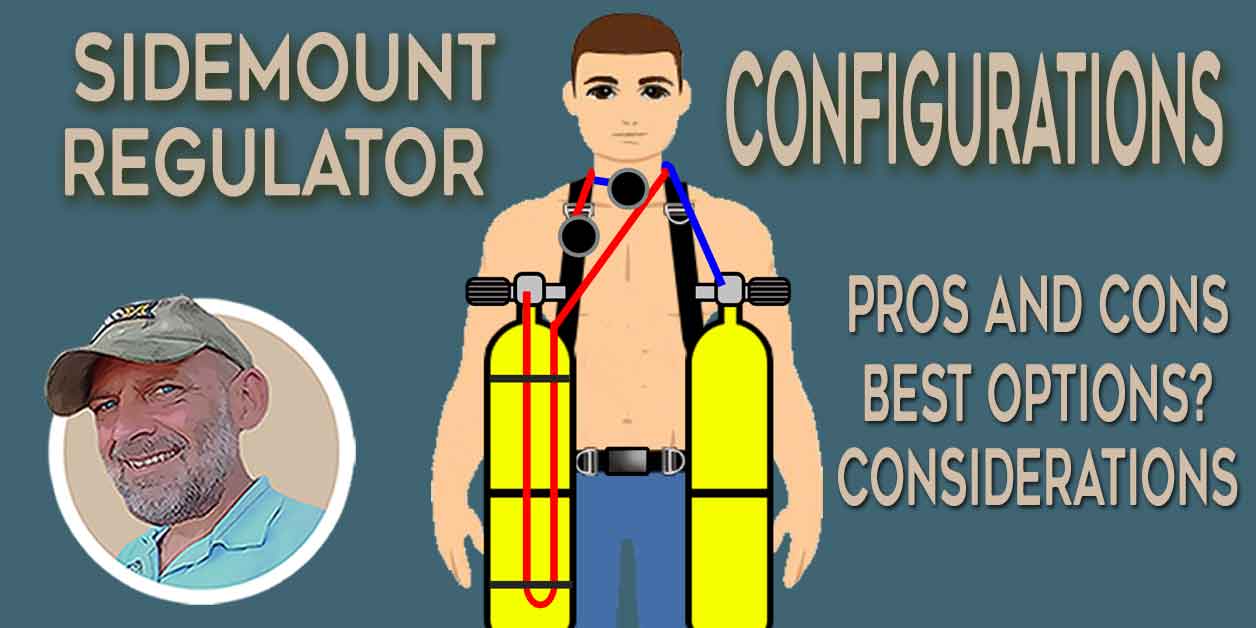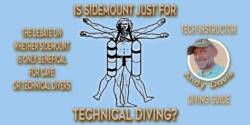Sidemount Training: How To Find An Effective Course
Sidemount training is one of the most quality-variable areas in diving instruction. Sadly, there is a proliferation of incompetent instruction, and that necessitates caution and care when selecting a sidemount instructor.
Sidemount demands a highly refined, detailed and principled application if any measure of adequate optimization is to be achieved from training. It demands an instructor with sidemount-specific expertise and experience.

There are far too many non-specialist sidemount instructors delivering inadequate training. They are enabled by dive training agencies that permit instructors to self-certify for teaching sidemount and courses that have inadequate performance standards which don’t specifically demand optimized equipment and all-around sidemount diving proficiency upon certification.
Sidemount is a specialized approach to diving; it demands equally specialist instructors. There is a huge difference between specialist training and a “speciality” course.
Sidemount training: specialist vs “speciality” instructors
Sidemount specialists and gurus
A specialist sidemount instructor is expected to have years of experience and hundreds of sidemount dives. It will be their primary approach to diving; constituting the majority of their underwater experience.
The “gurus” of sidemount diving will have decades of focused experience and multiple thousands of sidemount dives; it will be their passion and they will dive sidemount near-exclusively. Their sidemount diving and teaching will have a broad range; typically including advanced technical and overhead environment levels of diving.
Passion and experience combine to develop expertise.
Specialist sidemount instructors will have learned lessons, developed their understanding of systematic principles and further refined their approach on every one of the multitudes of sidemount dives they have conducted. Experience acquisition is cumulative and it takes many thousands of hours of practice and application for a true measure of expertise to be developed.
Mainstream “speciality” instructors
In contrast, a “speciality” sidemount instructor may have only done a handful of dives over a weekend or two using the equipment. They might only use sidemount on very rare occasions when a naive student signs up for a course with them.
Put simply, sidemount doesn’t matter to them. It’s just one more course that they sell. They won’t invest in high-quality sidemount instruction for themselves because they aren’t professionally motivated to deliver high-quality instruction to their students. They won’t devote time to practising and developing their sidemount proficiency.
The results from their training courses are predictable; students get certified but still feel frustrated with their lack of competency, comfort and confidence in sidemount diving. The instructor typically attempts to disingenuously appease them by stating it is “normal to need more experience after certification“.
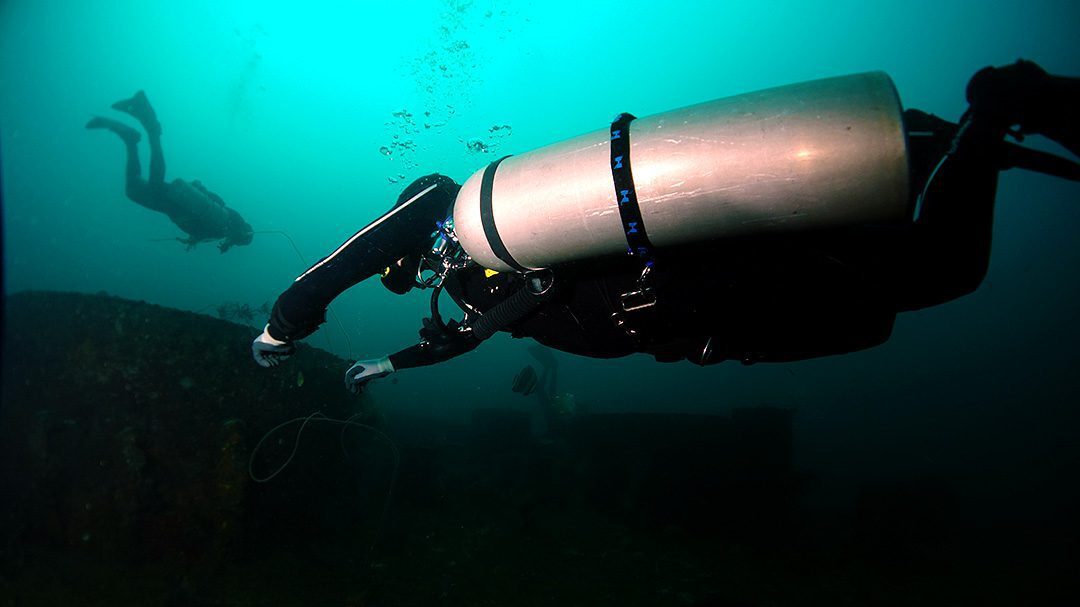
That is a lie. Competent sidemount instruction ensures that the student is certified with a high level of proficiency, optimized gear configuration and a reliably ingrained skillset.
Students should feel comfortable within minutes of first getting into the water on their sidemount course, not months or years after it. Their equipment will be refined on day one of training; it won’t be something they’ll have to improve afterwards. Sidemount diving will feel intuitive and natural for them, long before their course ends.
It is saddening to observe so many qualified sidemount divers still struggling to make their gear functional, unaware of the most basic principles and persistently uncomfortable in the water. Some eventually resort to seeking out an expert to remediate and resolve their problems. Others can be seen asking for rudimentary advice on sidemount social media groups.
Cheap, quick, inexpertly taught speciality sidemount courses can be the perfect example of “save a dime, cost a dollar“.

Buy my ‘Sidemount: Principles For Success’ ebook now!
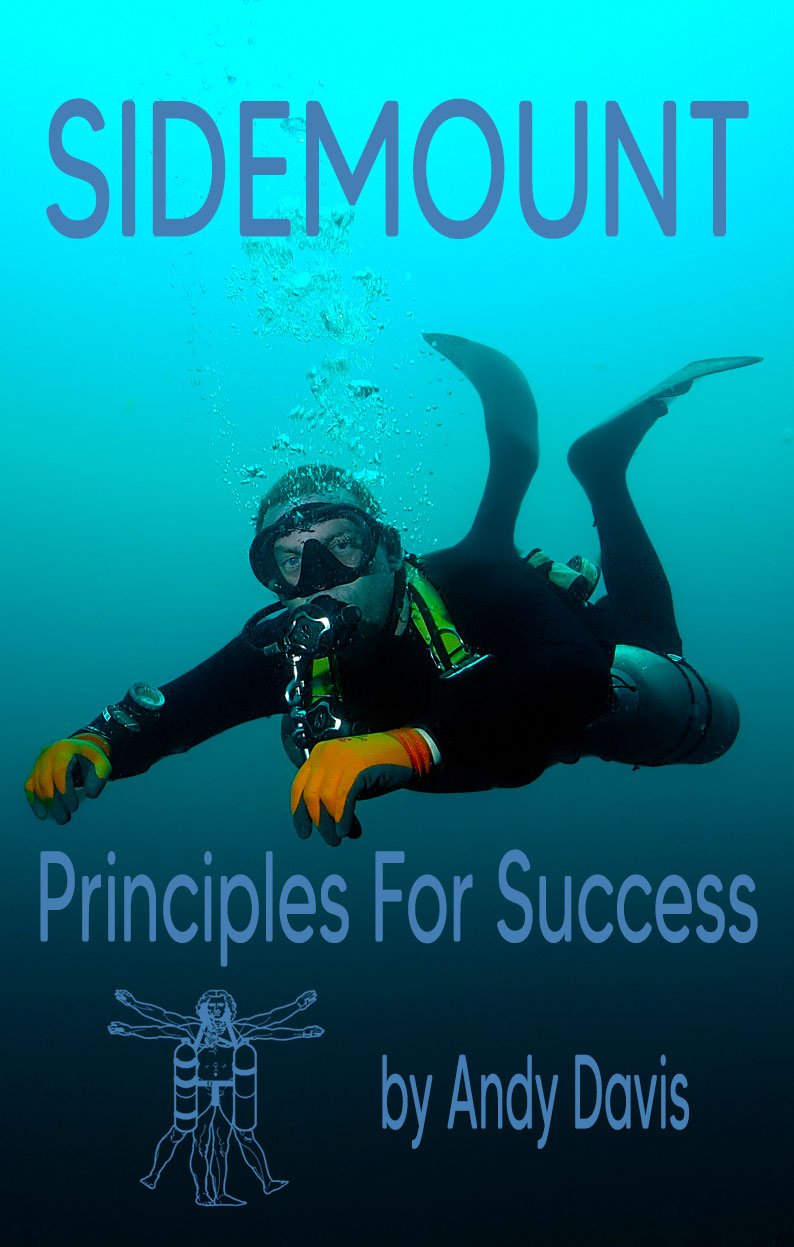
My comprehensive guide to sidemount configuration and development as a diver.
178 Pages. PDF format. Only $25
Fully Illustrated!
Chapters include:
- Sidemount history, design styles, and cylinder principles
- Harness and bungee setup and sizing
- Configuring deco/stage cylinders
- Diagnosing cylinder trim problems
- Regulators and hardware
- Training and skillset development
What are common failures in sidemount training?
Weak fundamental skills
Sidemount diving demands competent fundamental diving skills; buoyancy, trim and propulsion techniques. If those basic proficiencies are deficient, then sidemount equipment cannot work as it is intended.
For that reason, specialist instructors routinely devote a proportion of their in-water sidemount training time to improving their students’ fundamental diving proficiencies.
That level of instructional diligence is typically absent from cookie-cutter sidemount speciality courses. Instead, there will just be a rudimentary tick-list of skills performed, a few dives and a certification card sent in the mail.
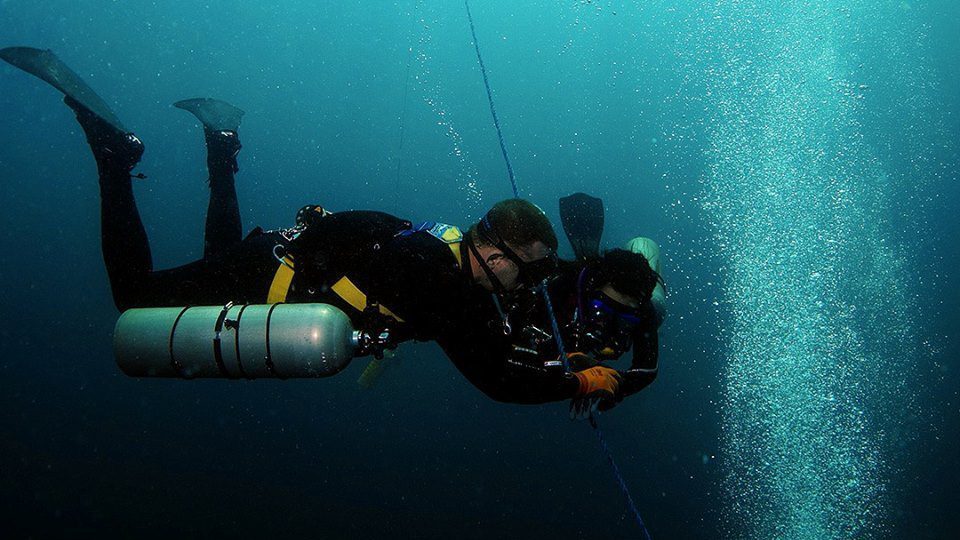
Invariably, low-quality sidemount instructors don’t deliver fundamental skills development because they have skill weaknesses. They cannot teach what they cannot do themselves, and they aren’t motivated to remedy that with practice.
When searching for a competent sidemount instructor, do inquire whether fundamental diving skills will be developed during training. Do some research to confirm that the instructor is highly proficient in fundamental skills. If they are reputable and established in the dive training industry they are likely to have photos and videos online that you can inspect.
Weak fundamental diving skills coupled with incorrect equipment configuration. In this case, aluminium cylinders are set up on a buttplate. This makes streamlined cylinder trim an impossibility.
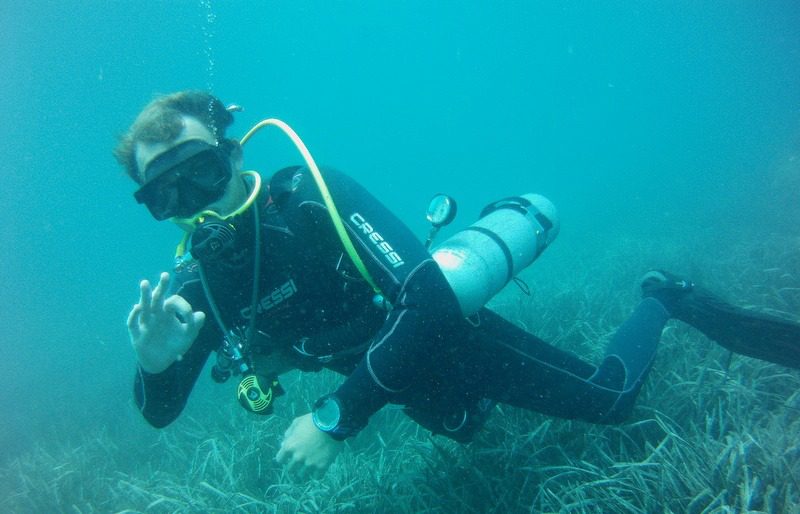
The student won’t enjoy any of the stability and control that should be intrinsic to sidemount diving.
Improper equipment configuration
Sidemount courses are primarily equipment-focused. Configuring, sizing, adjusting and optimizing sidemount equipment for individual divers demands very high attention to detail.
There is no arbitrary “right or wrong” with a sidemount configuration, but there are key principles that have to be understood and applied to achieve an optimal gear setup. If an instructor claims to be professional, then they must deliver optimized results.
Sidemount isn’t a free-for-all when it comes to configuration; there are specific configuration systems where each component is interdependent on everything else.
Different sidemount configuration systems have different purposes; some are specific to certain diving activities or environments, some only work effectively with steel or aluminium cylinders, some are better for caves or wrecks, and others favour ocean diving.
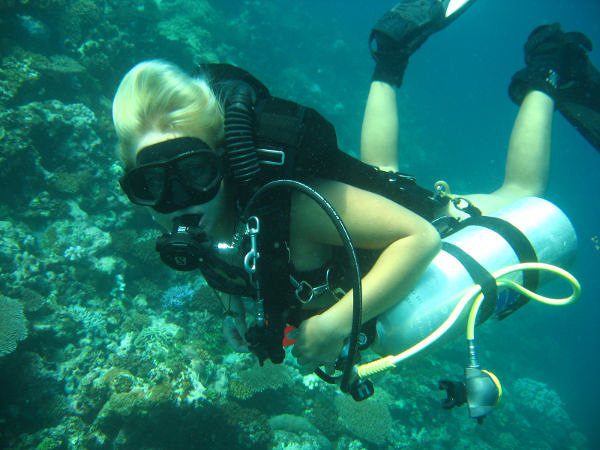
This diver has to physically hold their cylinder in trim because it is mounted on a buttplate and uses a ring bungee meant for steel cylinders. Coupled with the extremely messy regulator configuration, their setup works against them.
The instructor must intimately understand the critical principles of how every aspect of the sidemount rig is interrelated to achieve optimal performance. They should be able to advise their students on what approach is most appropriate for their diving needs.
Every facet of the sidemount configuration; the bungee method, harness rigging, hose routing and cylinder set-up, must work together effectively. When it’s all done right, the diver will benefit from extremely low task loading, more ease in the operation of their equipment and overall performance in the water.
Incompetent instruction leads to very disappointing outcomes. The configuration illustrated here would be horrific to dive with. Diving gear this dysfunctional is dangerous. Literally, zero knowledge or experience was applied.
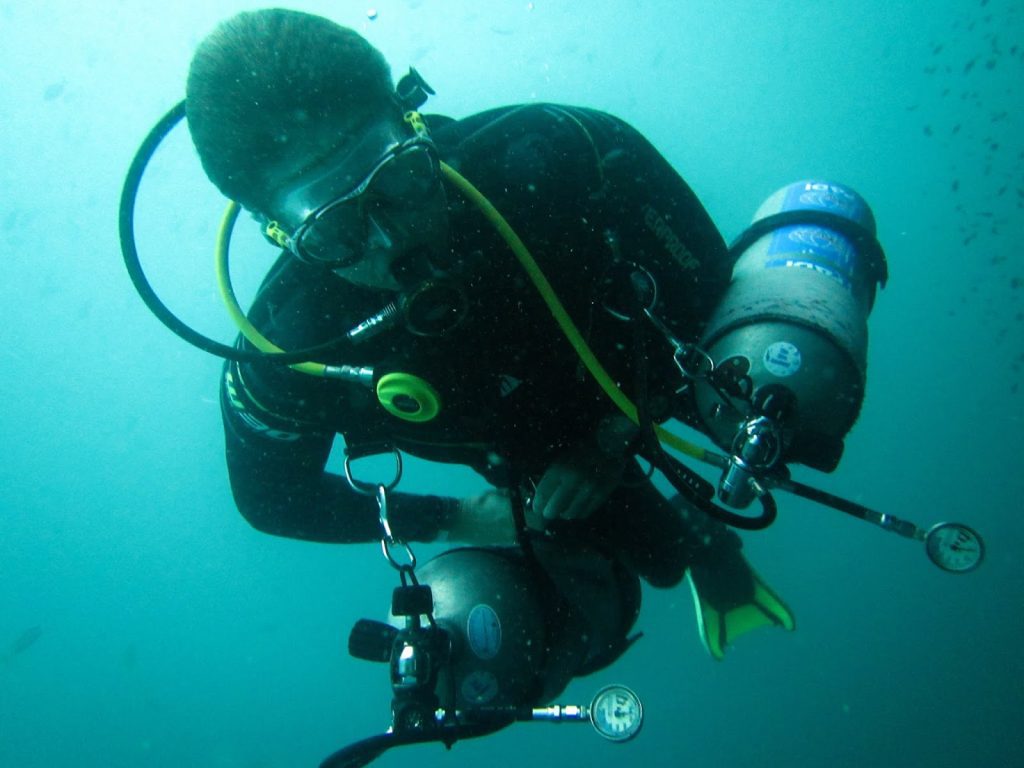
Inexperienced and poorly trained sidemount instructors typically fail to appreciate the finer points of sidemount configuration. Their students inevitably suffer from that low attention to detail. They won’t feel as comfortable in the water and the whole experience of using a sidemount will be difficult and counter-intuitive.
One of the biggest indicators of incompetent sidemount instruction is having no knowledge of the differences between steel and aluminium cylinder diving.
These failings in basic sidemount configuration are indicative of the “fake it until you make it” approach to teaching. Sidemount is an equipment-focused activity. If an instructor cannot get equipment set up properly, they don’t deserve to be taking money from students.
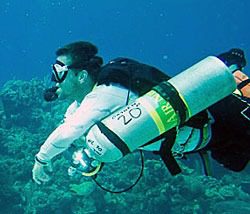
This is known as the infamous “gorilla’ posture. Cylinder trim is impossible and the divers’ ability to operate equipment or react to problems is degraded because their arm mobility is very impaired. The configuration is fundamentally wrong and poses a danger.
Insufficient sidemount training time
I have already described why specific sidemount equipment expertise and high attention to detail in equipment configuration are critical. For a sidemount course to be effective, it must provide sufficient time for the instructor to apply their expertise and attention to detail.
When sidemount training is considered as ‘just another speciality course‘; run in a minimum timescale of two days and four training dives, even the best instructors would struggle to achieve satisfying results.
When an instructor attempts to cram a course within a bare minimum timescale, then they do so at the expense of teaching thoroughly and with high attention to detail.
There will be insufficient time available for properly configuring the sidemount equipment and also for the student to rehearse equipment operation skills with a sufficient amount of repetition to ingrain the skills accurately and reliably.
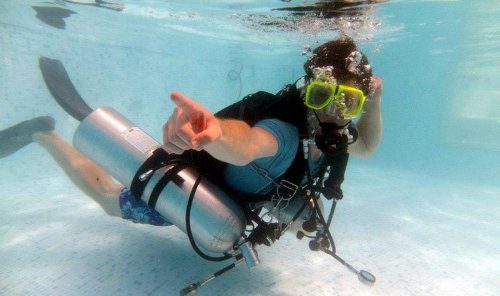
This sidemount instructor has applied little or no attention to detail with their equipment configuration. The sub-optimal configuration makes the task of sidemount diving more demanding and uncomfortable.
A sidemount instructor with true expertise has a lot of knowledge and proficiency to pass to the student. High-quality sidemount instructors typically specify a course duration of four to five days duration. If you undertake sidemount training of that calibre you will notice that it is very intensive and comprehensive; despite taking longer.
Competent sidemount instructors know that it is critical to get their students’ equipment optimized before getting into the water. For that reason, they will devote a half or full day to conducting an equipment workshop at the outset of training.
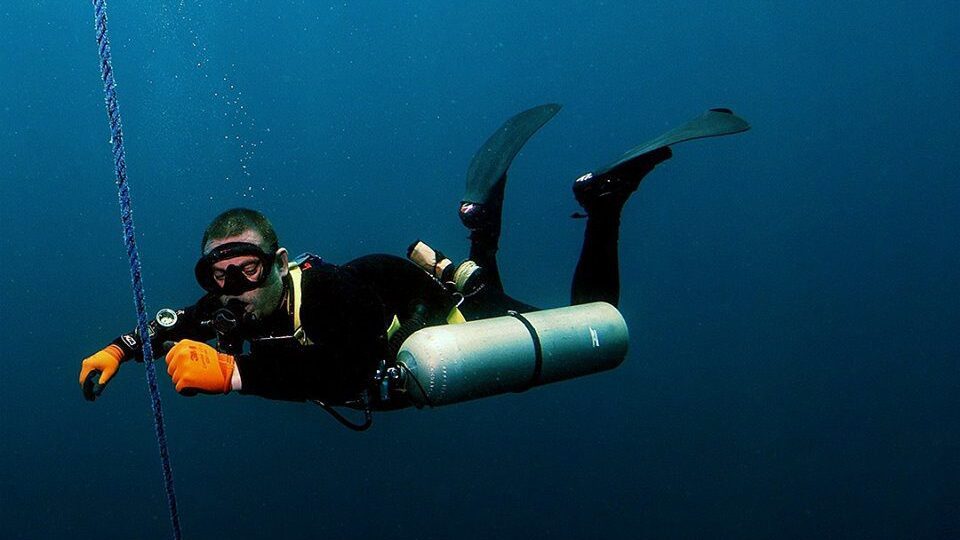
Sidemount equipment workshops don’t just get students’ gear precisely configured; they teach the student about the principles driving the configuration. The student should leave training competent to configure their own gear optimally in the future.
When a sidemount equipment workshop is successful, the student should feel comfortable in their gear when they first enter the water. Very little further adjustment or modification should be necessary. In-water training should be totally focused on skills development, not distracted by equipment problems.
If you are considering sidemount training in the future, look out for courses which designate ample time for a comprehensive equipment workshop.
Aluminium cylinders are again mounted on a buttplate and the regulators are a mess. Bad gear configuration dramatically increases cognitive loading; simple skills become exponentially more difficult to complete; especially in emergencies.
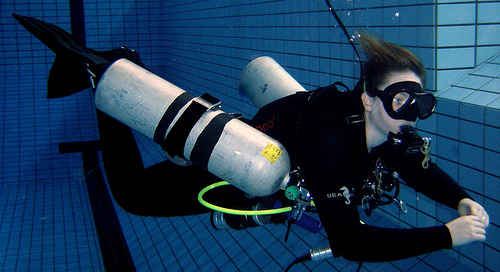
If an instructor is contented that two days of sidemount training days will be sufficient to deliver adequate knowledge and competency, you should question the depth of their sidemount understanding and ability.
Whilst there are occasionally very capable divers who can fast-track to sidemount proficiency, the overwhelming majority of divers will need more than an absolute bare minimum training time for adequate skills repetition, equipment configuration and the plethora of other things that need to be covered before certification is earned.
No deliberate repetitive practice
Hopefully, you are already beginning to understand the necessity for high attention to detail in sidemount training. Students need ample time in the water to learn and practice skills so that the right level of detail can be absorbed and replicated.
When evaluating different sidemount courses, you should ask how much time will be spent in the water doing practice. High-quality sidemount training will allocate several hours for in-water deliberate skills practice. Anything above 240 minutes could be considered good; although training time adequacy ultimately has to be measured by how long it takes an individual student to attain proficiency.
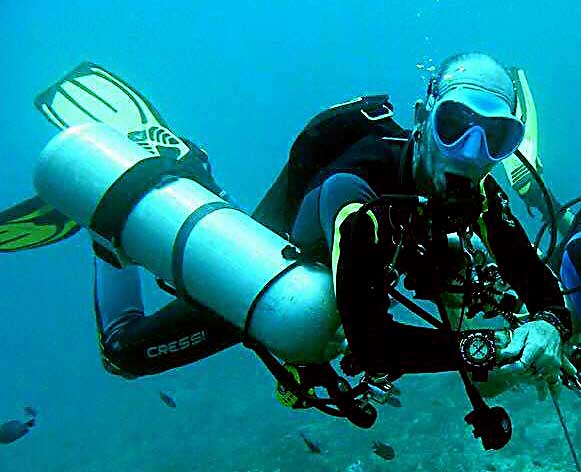
Aluminium cylinders with a buttplate illustrate an instructor who doesn’t understand basic sidemount principles. The ‘quick fix’ of adding weights to the cylinders is desperation. It’s a bad fix for a problem caused entirely by the absence of expertise.
Do note that deliberate practice time is not the same as just going diving. Deliberate practice is specifically shallow-water skill development; time spent repeating skills and improving performance with immediate instructor feedback. Sidemount course training dives should not be considered deliberate practice time.
Training of this nature has a profound effect on developing overall diver proficiency and competency. The training is sufficient to make sidemount equipment operation and skills easy.
The student subsequently enjoys far less task loading and stress during their diving. That, in turn, empowers the student to enjoy much higher situational awareness and control in the water.
Sidemount training: Lowering standards or raising student proficiency?
Low-quality instructors make it easy to certify as a sidemount diver by lowering skill performance expectations. Do a skill once or twice and move forwards to tick off another box. They happily certify students who are still struggling with the basic operation of their equipment and haven’t achieved any measure of proficiency or comfort.
Once qualified, the student will struggle indefinitely. They will not reap the rewards that they were promised sidemount diving would bring.
This technical sidemount student is suffering from a very poorly optimized configuration. Every facet of their gear illustrates almost zero attention to detail. The decompression cylinders hang a clear 12 inches below the torso causing a pendulum effect that destroys stability. Notice the student holding the instructor’s wrist as they try to compensate.
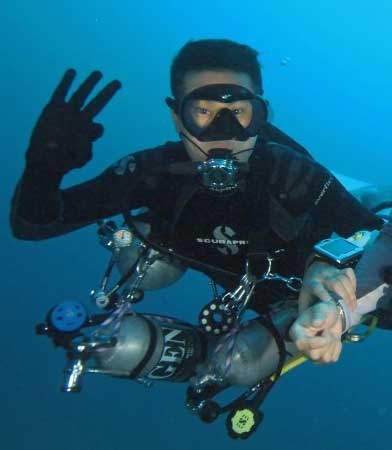
In contrast, a sidemount instructor with expertise and experience will allocate sufficient time for the student to learn and practice every necessary facet to meet a high standard of performance.
Having that ample time to apply high attention to detail and conduct repetitive effective practice makes it very easy for the student to attain proficiency and comfort using their sidemount equipment.
A high-quality instructor will never need to lower performance expectations. Instead, they’ll understand that their students will ultimately benefit in the long term by presenting them with the opportunity to learn effectively and comprehensively from the outset.
Finding the best sidemount training
The quality of sidemount training is important if the diver wants acceptable results after certification. Because sidemount diving is a specialist, equipment-focused, approach to diving it demands a level of expertise from the instructor. It cannot be taught effectively by someone who hasn’t put in the hours of effort learning the principle, details and intricacies of how it works.
Cheap, low-quality courses run by non-specialists in the bare minimum timescale are a waste of money. They can make things worse than if the diver just spent months and years working it out for themselves.
If you are considering sidemount diving in the future, find a truly specialist instructor who will spend enough time mentoring and teaching you for optimal results. Choose someone with the expertise and experience to make sidemount training feel easy; rather than an instructor who makes sidemount courses easy by lowering performance standards.
About The Author

Andy Davis is a RAID, PADI TecRec, ANDI, BSAC, and SSI-qualified independent technical diving instructor who specializes in teaching sidemount, trimix, and advanced wreck diving courses.
Currently residing in Subic Bay, Philippines; he has amassed more than 10,000 open-circuit and CCR dives over three decades of challenging diving across the globe.
Andy has published numerous diving magazine articles and designed advanced certification courses for several dive training agencies, He regularly tests and reviews new dive gear for scuba equipment manufacturers. Andy is currently writing a series of advanced diving books and creating a range of tech diving clothing and accessories.
Prior to becoming a professional technical diving educator in 2006, Andy was a commissioned officer in the Royal Air Force and has served in Iraq, Afghanistan, Belize, and Cyprus.
In 2023, Andy was named in the “Who’s Who of Sidemount” list by GUE InDepth Magazine.
Purchase my exclusive diving ebooks!
Originally posted 2018-11-05 06:10:18.







